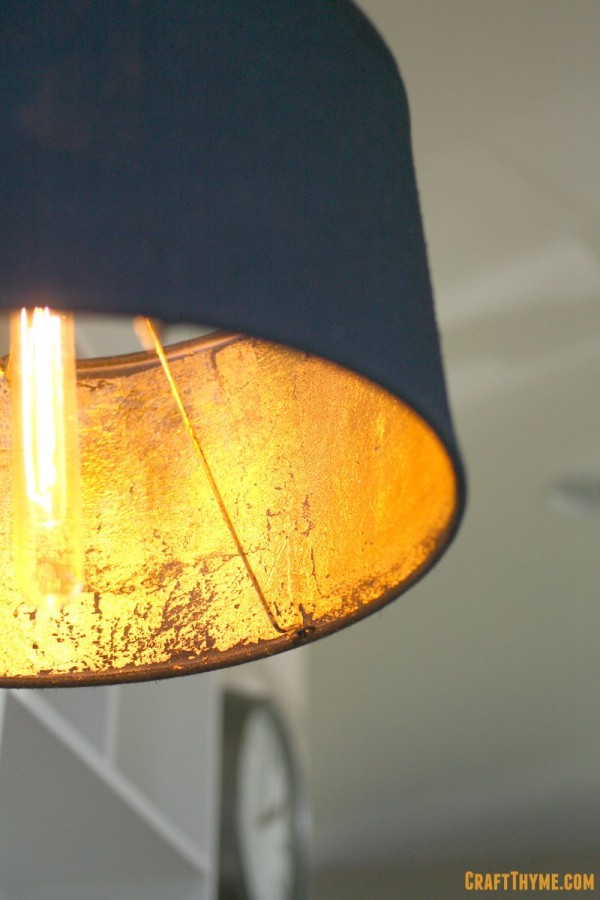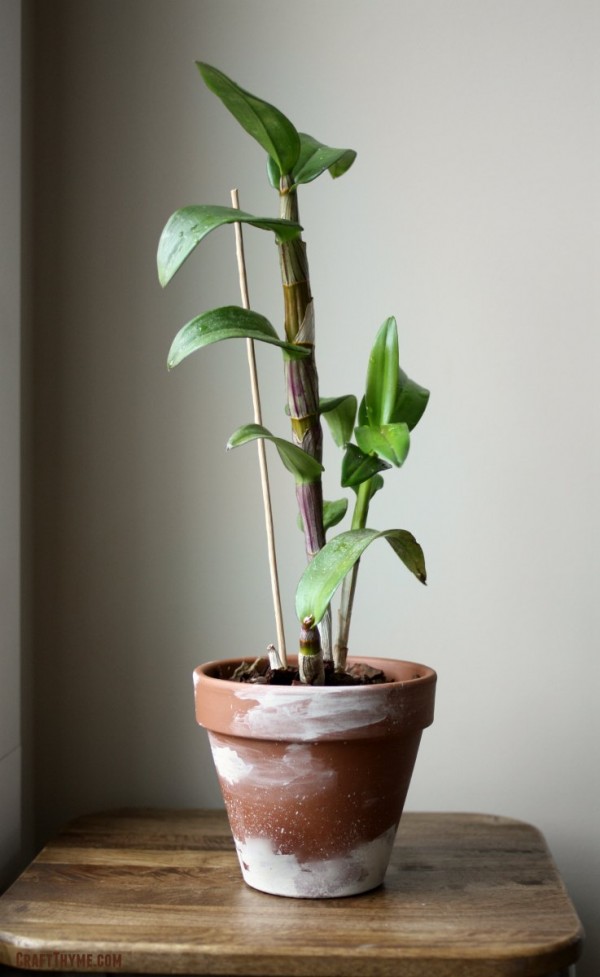
I have always admired the look of a gold leaf lampshade, but I have not admired the price. DIY to the rescue! I did the DIY gold leaf lamp shade for two different shades. I absolutely love the look of the gold leaf paired with the warm glow of Edison bulbs. I like it even better when I just squash my liberal guilt down and tell myself that it is an accent light and I don’t reaaaalllllyyyy need to be using the LED’s to save the environment… Anyway, back to the tutorial.
How to DIY Gold Leaf a Lamp Shade
Materials Needed:
- Lamp shade: Note the underline and bolding. The lampshade selection is key to choosing the correct materials from this point forward!
- Gold Leaf Sheets*
: I grabbed a Gold Leaf Kit*
and ordered a refill. I needed somewhere in the order of 40 sheets to do two normal sized lampshades. I am not advocating using real gold here! The gold toned sheets give a great finish at a tenth of the cost of actual gold.
- Adhesive*
(also called Sizing*
): Here is where the lampshade makes a difference. Hard plastic interior lampshades work well with the paint on adhesive contained in a gold leaf starter kit, BUT you will really need a spray adhesive for a fabric lampshade. The fabric soaks up the liquid adhesive quickly while a spray adhesive coats the surface of the fabric giving a good sticky edge to grab the leaf
- Sealer*
- Soft Brush: Does not need to be expensive and frankly I misplaced my bristle brush and just finished up with a sponge brush. I might have been too lazy to dig through the paint supplies to find a nicer brush, though, the results would likely have a smoother finish.
- Spray Paint: Only if you are changing the color of your lampshade
Step 1: Correcting Your Lamp Shade
Is your lamp shade old? ugly? Old and Ugly? Give it a good cleaning, spray paint the hell out of it, and or bedazzle the exterior until you are happy with the look. You’ll need to complete the outside prior to the gold leaf. What’s that you ask? Can you spray paint a cloth lampshade? Hells yes you can. Just remember it will soak up a lot of paint so be prepared to do a few coats.

Step 2: Getting Sticky
All gold leaf applications require that you have a tacky adhesive set and ready prior to gold leafing. What this means in layman’s terms is when you touch a prepared surface it will need to feel sticky to the touch. Picture your counter after you have left some sugary substance dry and you get a nice sticky feeling. Liquid adhesive is painted on and left to dry anywhere from 10-30 minutes. Spray adhesive is instantly ready. Remember to only apply in areas large enough that you plan to work with soon. The sticky places can overly dry or collect dirt and lint. I worked in 1/4 shade size pieces.
Make certain to cover any areas that you do not want to gold leaf! Small particles of leaf will flake off during the leafing process and cling to any sticky areas. Great if you plan on having gold in that area, bad if you do not.

Step 3: Be Delicate
First and foremost, the gold leaf is not actually attached to the little booklet. The pages in between are there as protective dividers. Don’t be a dork (maybe like me) and spend a good amount of time trying to rip out a page. Lightly touch the gold leaf with clean fingers and kind of fan out the leaf above your project. Where ever it touch the sticky part it is going to be STUCK. So just know that wrinkles, ripped pages, etc are going to be part of the first few attempts. This worked fine as I wanted an industrial, patchy look. Also if the interior surface is not hard, you are never going to get a smooth appearance. You should check out my tutorial on gold foiling fabric for an alternative if you are looking for a completely smooth fabric finish.
Step 4: Burnish Away
Once the leaf has been laid down use a soft bristle brush to pat it into any crevices and remove any extra leaf. After burnishing a sheet repeat step 3 with the slightest over overlaps on the next sheet. I wanted a more random look so I applied sheets at different angles and used partial sheets to fill in gaps
Step 5: Protect Your Baby
Gold leaf is delicate and faux gold leaf will tarnish and change when not protected. The kits come with a paint on sealer but you can use any clear acrylic coat designed to cover metal. Paint or spray your coating. Once dry place your lampshade on and admire!
PLEASE NOTE: INSERT SOME CAUTION HERE
Use common sense here! You just added a reflective metal coating to an item that surrounds a hot light bulb. Monitor the heat that your lamp is putting out. Use a lower wattage or LED lightbulb if you detect any abnormal heat. A good looking lampshade is never a reason to start a fire!!!








